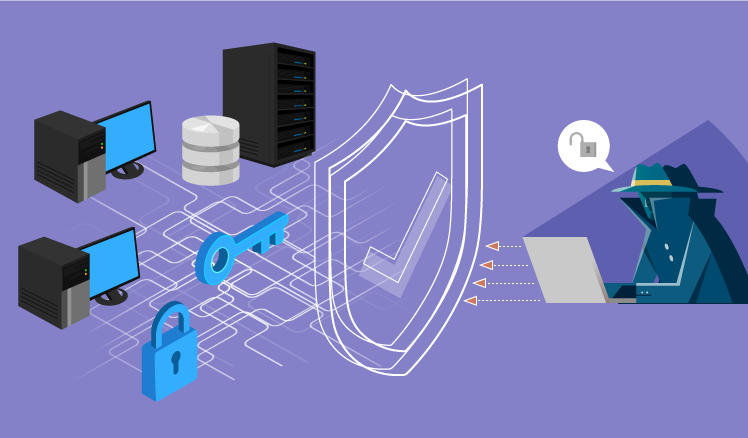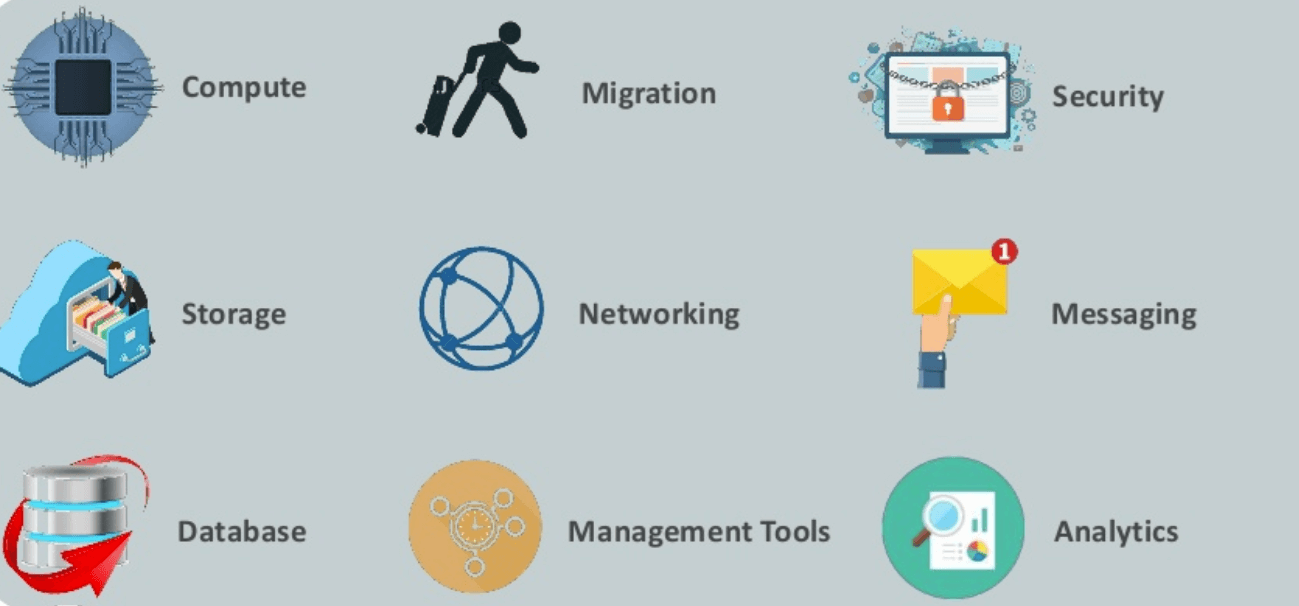In computing, a denial-of-service attack (DoS attack) is a cyber-attack in which the perpetrator seeks to make a machine or network resource unavailable to its intended users by temporarily or indefinitely disrupting services of a host connected to the Internet. Denial of service is typically accomplished by flooding the targeted machine or resource with superfluous requests in an attempt to overload systems and prevent some or all legitimate requests from being fulfilled.
In a distributed denial-of-service attack (DDoS attack), the incoming traffic flooding the victim originates from many different sources. This effectively makes it impossible to stop the attack simply by blocking a single source.

A DoS or DDoS attack is analogous to a group of people crowding the entry door of a shop, making it hard for legitimate customers to enter, thus disrupting trade.
Criminal perpetrators of DoS attacks often target sites or services hosted on high-profile web servers such as banks or credit card payment gateways. Revenge, blackmail and can motivate these attacks.
Attack techniques
Attack tools
In cases such as MyDoom and Slowloris the tools are embedded in malware and launch their attacks without the knowledge of the system owner. Stacheldraht is a classic example of a DDoS tool. It uses a layered structure where the attacker uses a client program to connect to handlers which are compromised systems that issue commands to the zombie agents which in turn facilitate the DDoS attack. Agents are compromised via the handlers by the attacker using automated routines to exploit vulnerabilities in programs that accept remote connections running on the targeted remote hosts. Each handler can control up to a thousand agents.
Application-layer attacks
Application-layer attacks employ DoS-causing exploits and can cause server-running software to fill the disk space or consume all available memory or CPU time. Attacks may use specific packet types or connection requests to saturate finite resources by, for example, occupying the maximum number of open connections or filling the victim’s disk space with logs. An attacker with shell-level access to a victim’s computer may slow it until it is unusable or crash it by using a fork bomb. Another kind of application-level DoS attack is XDoS (or XML DoS) which can be controlled by modern web application firewalls (WAFs).
Degradation-of-service attacks
Pulsing zombies are compromised computers that are directed to launch intermittent and short-lived floodings of victim websites with the intent of merely slowing it rather than crashing it. This type of attack, referred to as degradation-of-service, can be more difficult to detect and can disrupt and hamper connection to websites for prolonged periods of time, potentially causing more overall disruption than a denial-of-service attack. Exposure of degradation-of-service attacks is complicated further by the matter of discerning whether the server is really being attacked or is experincing higher than normal legitimate traffic loads.
Denial-of-service Level II
The goal of DoS L2 (possibly DDoS) attack is to cause a launching of a defense mechanism which blocks the network segment from which the attack originated. In case of distributed attack or IP header modification (that depends on the kind of security behavior) it will fully block the attacked network from the Internet, but without system crash.
Distributed DoS attack
A distributed denial-of-service (DDoS) attack occurs when multiple systems flood the bandwidth or resources of a targeted system, usually one or more web servers. Such an attack is often the result of multiple compromised systems (for example, a botnet) flooding the targeted system with traffic. A botnet is a network of zombie computers programmed to receive commands without the owners’ knowledge. When a server is overloaded with connections, new connections can no longer be accepted. The major advantages to an attacker of using a distributed denial-of-service attack are that multiple machines can generate more attack traffic than one machine, multiple attack machines are harder to turn off than one attack machine, and that the behavior of each attack machine can be stealthier, making it harder to track and shut down. These attacker advantages cause challenges for defense mechanisms. For example, merely purchasing more incoming bandwidth than the current volume of the attack might not help, because the attacker might be able to simply add more attack machines. This, after all, will end up completely crashing a website for periods of time.
DDoS extortion
In 2015, DDoS botnets such as DD4BC grew in prominence, taking aim at financial institutions. Cyber-extortionists typically begin with a low-level attack and a warning that a larger attack will be carried out if a ransom is not paid in Bitcoin. Security experts recommend targeted websites to not pay the ransom. The attackers tend to get into an extended extortion scheme once they recognize that the target is ready to pay.
HTTP slow POST DoS attack
First discovered in 2009, the HTTP slow POST attack sends a complete, legitimate HTTP POST header, which includes a ‘Content-Length’ field to specify the size of the message body to follow. However, the attacker then proceeds to send the actual message body at an extremely slow rate. Due to the entire message being correct and complete, the target server will attempt to obey the ‘Content-Length’ field in the header, and wait for the entire body of the message to be transmitted, which can take a very long time. The attacker establishes hundreds or even thousands of such connections until all resources for incoming connections on the server (the victim) are used up, hence making any further (including legitimate) connections impossible until all data has been sent. It is notable that unlike many other (D)DoS attacks, which try to subdue the server by overloading its network or CPU, an HTTP slow POST attack targets the logical resources of the victim, which means the victim would still have enough network bandwidth and processing power to operate. Further combined with the fact that will, by default, accept requests up to 2GB in size, this attack can be particularly powerful. HTTP slow POST attacks are difficult to differentiate from legitimate connections and are therefore able to bypass some protection systems. OWASP, an open source web application security project, released a tool to test the security of servers against this type of attacks.
Challenge Collapsar (CC) attack
A Challenge Collapsar (CC) attack is an attack that standard HTTP requests are sent to a targeted web server frequently, in which the Uniform Resource Identifiers (URIs) require complicated time-consuming algorithms or database operations, in order to exhaust the resources of the targeted web server.
In 2004, a Chinese hacker nicknamed KiKi invented a hacking tool to send these kinds of requests to attack a NSFOCUS firewall named “Collapsar”, and thus the hacking tool was known as “Challenge Collapsar”, or CC for short. Consequently, this type of attack got the name “CC attack”.
Internet Control Message Protocol (ICMP) flood
A smurf attack relies on misconfigured network devices that allow packets to be sent to all computer hosts on a particular network via the broadcast address of the network, rather than a specific machine. The attacker will send large numbers of IP packets with the source address faked to appear to be the address of the victim. Most devices on a network will, by default, respond to this by sending a reply to the source IP address. If the number of machines on the network that receive and respond to these packets is very large, the victim’s computer will be flooded with traffic. This overloads the victim computer and can even make it unusable during such attack.
Ping flood is based on sending the victim an overwhelming number of ping packets, usually using the “ping” command from Unix-like hosts (the -t flag on Windows systems is much less capable of overwhelming a target, also the -l (size) flag does not allow sent packet size greater than 65500 in Windows). It is very simple to launch, the primary requirement being access to greater bandwidth than the victim.
Ping of death is based on sending the victim a malformed ping packet, which will lead to a system crash on a vulnerable system.
The BlackNurse attack is an example of an attack taking advantage of the required Destination Port Unreachable ICMP packets.
Nuke
A Nuke is an old denial-of-service attack against computer networks consisting of fragmented or otherwise invalid ICMP packets sent to the target, achieved by using a modified ping utility to repeatedly send this corrupt data, thus slowing down the affected computer until it comes to a complete stop.[52]
A specific example of a nuke attack that gained some prominence is the WinNuke, which exploited the vulnerability in the NetBIOS handler in Windows 95. A string of out-of-band data was sent to TCP port 139 of the victim’s machine, causing it to lock up and display a Blue Screen of Death (BSOD).
Peer-to-peer attacks
Attackers have found a way to exploit a number of bugs in peer-to-peer servers to initiate DDoS attacks. The most aggressive of these peer-to-peer-DDoS attacks exploits DC++. With peer-to-peer there is no botnet and the attacker does not have to communicate with the clients it subverts. Instead, the attacker acts as a “puppet master,” instructing clients of large peer-to-peer file sharing hubs to disconnect from their peer-to-peer network and to connect to the victim’s website instead.
Permanent denial-of-service attacks
Permanent denial-of-service (PDoS), also known loosely as phlashing, is an attack that damages a system so badly that it requires replacement or reinstallation of hardware. Unlike the distributed denial-of-service attack, a PDoS attack exploits security flaws which allow remote administration on the management interfaces of the victim’s hardware, such as routers, printers, or other networking hardware. The attacker uses these vulnerabilities to replace a device’s firmware with a modified, corrupt, or defective firmware image—a process which when done legitimately is known as flashing. This therefore “bricks” the device, rendering it unusable for its original purpose until it can be repaired or replaced.
The PDoS is a pure hardware targeted attack which can be much faster and requires fewer resources than using a botnet or a root/vserver in a DDoS attack. Because of these features, and the potential and high probability of security exploits on Network Enabled Embedded Devices (NEEDs), this technique has come to the attention of numerous hacking communities. BrickerBot, a piece of malware that targeted IoT devices, used PDoS attacks to disable its targets.
PhlashDance is a tool created by Rich Smith (an employee of Hewlett-Packard’s Systems Security Lab) used to detect and demonstrate PDoS vulnerabilities at the 2008 EUSecWest Applied Security Conference in London.
Reflected / spoofed attack
A distributed denial-of-service attack may involve sending forged requests of some type to a very large number of computers that will reply to the requests. Using Internet Protocol address spoofing, the source address is set to that of the targeted victim, which means all the replies will go to (and flood) the target. (This reflected attack form is sometimes called a “DRDOS”.)
ICMP Echo Request attacks (Smurf attack) can be considered one form of reflected attack, as the flooding host(s) send Echo Requests to the broadcast addresses of mis-configured networks, thereby enticing hosts to send Echo Reply packets to the victim. Some early DDoS programs implemented a distributed form of this attack.
Mirai botnet
This attack works by using a worm to infect hundreds of thousands of IoT devices across the internet. The worm propagates through networks and systems taking control of poorly protected IoT devices such as thermostats, Wi-Fi enabled clocks and washing machines.W the device becomes enslaved usually the owner or user will have no immediate indication. The IoT device itself is not the direct target of the attack, it is used as a part of a larger attack. These newly enslaved devices are called slaves or bots. Once the hacker has acquired the desired number of bots, they instruct the bots to try to contact an ISP. In October 2016, a Mirai botnet attacked Dyn which is the ISP for sites such as Twitter, Netflix, etc. Assoon as this occurred, these websites were all unreachable for several hours. This type of attack is not physically damaging, but it will certainly be costly for any large internet companies that get attacked.
R-U-Dead-Yet? (RUDY)
RUDY attack targets web applications by starvation of available sessions on the web server. Much like Slowloris, RUDY keeps sessions at halt using never-ending POST transmissions and sending an arbitrarily large content-length header value.
SACK Panic
Manipulating maximum segment size and selective acknowledgement (SACK) it may be used by a remote peer to cause a denial of service by an integer overflow in the Linux kernel, causing even a Kernel panic. Jonathan Looney discovered CVE-2019-11477, CVE-2019-11478, CVE-2019-11479 on June 17, 2019.
Shrew attack
The shrew attack is a denial-of-service attack on the Transmission Control Protocol where the attacker employs man-in-the-middle techniques. It uses short synchronized bursts of traffic to disrupt TCP connections on the same link, by exploiting a weakness in TCP’s re-transmission timeout mechanism.[73]
Slow Read attack
A slow read attack sends legitimate application layer requests, but reads responses very slowly, thus trying to exhaust the server’s connection pool. It is achieved by advertising a very small number for the TCP Receive Window size, and at the same time emptying clients’ TCP receive buffer slowly, which causes a very low data flow rate.
Sophisticated low-bandwidth Distributed Denial-of-Service Attack
A sophisticated low-bandwidth DDoS attack is a form of DoS that uses less traffic and increases their effectiveness by aiming at a weak point in the victim’s system design, i.e., the attacker sends traffic consisting of complicated requests to the system. Essentially, a sophisticated DDoS attack is lower in cost due to its use of less traffic, is smaller in size making it more difficult to identify, and it has the ability to hurt systems which are protected by flow control mechanisms.
(S)SYN flood
A SYN flood occurs when a host sends a flood of TCP/SYN packets, often with a forged sender address. Each of these packets are handled like a connection request, causing the server to spawn a half-open connection, by sending back a TCP/SYN-ACK packet (Acknowledge), and waiting for a packet in response from the sender address (response to the ACK Packet). However, because the sender address is forged, the response never comes. These half-open connections saturate the number of available connections the server can make, keeping it from responding to legitimate requests until after the attack ends.
Teardrop attacks
A teardrop attack involves sending mangled IP fragments with overlapping, oversized payloads to the target machine. This can crash various operating systems because of a bug in their TCP/IP fragmentation re-assembly code. Windows 3.1x, Windows 95 and Windows NT operating systems, as well as versions of Linux prior to versions 2.0.32 and 2.1.63 are vulnerable to this attack.
(Although in September 2009, a vulnerability in Windows Vista was referred to as a “teardrop attack”, this targeted SMB2 which is a higher layer than the TCP packets that teardrop used).
One of the fields in an IP header is the “fragment offset” field, indicating the starting position, or offset, of the data contained in a fragmented packet relative to the data in the original packet. If the sum of the offset and size of one fragmented packet differs from that of the next fragmented packet, the packets overlap. When this happens, a server vulnerable to teardrop attacks is unable to reassemble the packets – resulting in a denial-of-service condition.
Telephony denial-of-service (TDoS)
Voice over IP has made abusive origination of large numbers of telephone voice calls inexpensive and readily automated while permitting call origins to be misrepresented through caller ID spoofing.
TTL expiry attack
It takes more router resources to drop a packet with a TTL value of 1 or less than it does to forward a packet with higher TTL value. When a packet is dropped due to TTL expiry, the router CPU must generate and send an ICMP time exceeded response. Generating many of these responses can overload the router’s CPU.
UPnP attack
This attack uses an existing vulnerability in Universal Plug and Play (UPnP) protocol to get around a considerable amount of the present defense methods and flood a target’s network and servers. The attack is based on a DNS amplification technique, but the attack mechanism is a UPnP router which forwards requests from one outer source to another disregarding UPnP behavior rules. Using the UPnP router returns the data on an unexpected UDP port from a bogus IP address, making it harder to take simple action to shut down the traffic flood. According to the Imperva researchers, the most effective way to stop this attack is for companies to lock down UPnP routers.


















